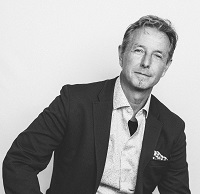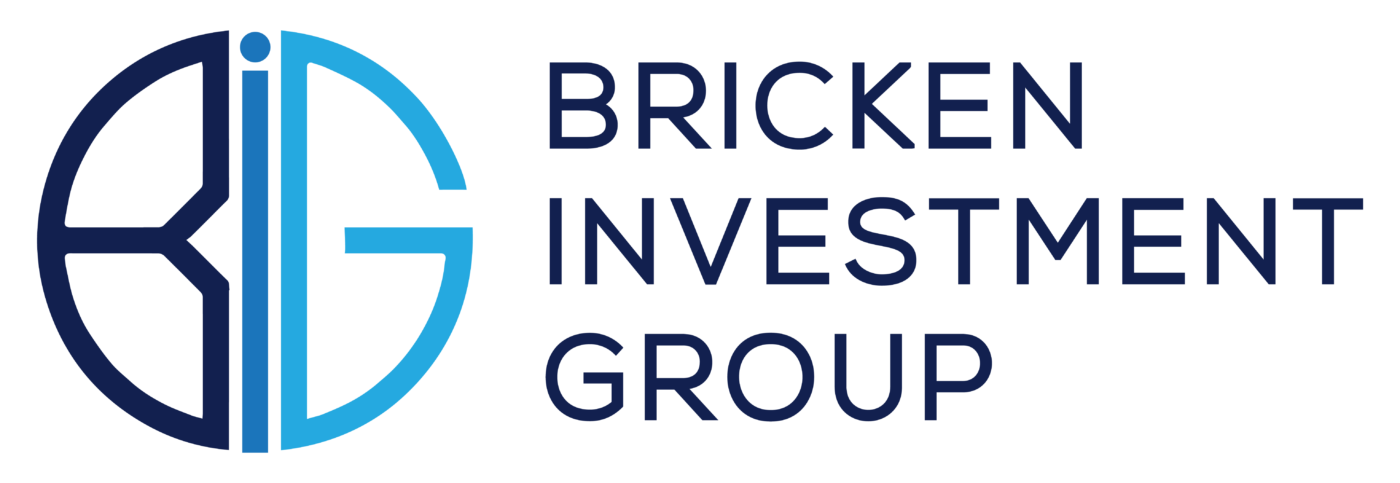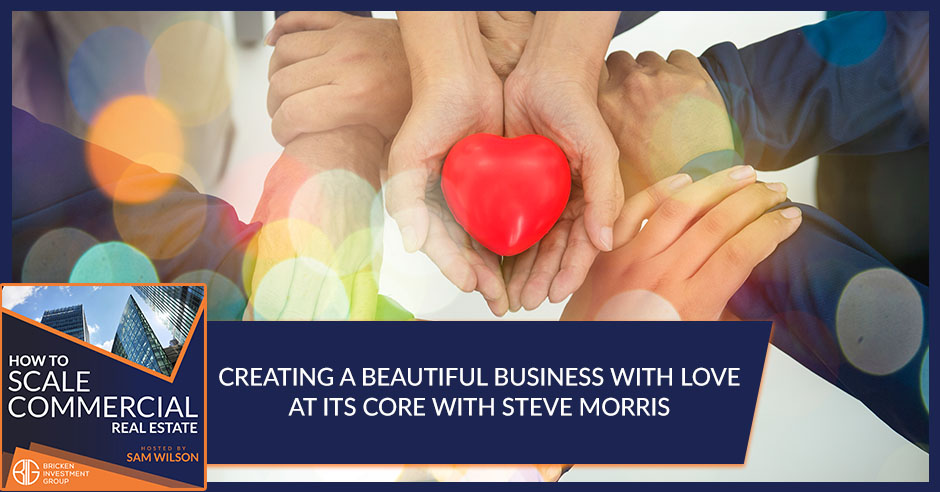As a business owner, you don’t want to build something just for profitability without considering other aspects of it. You want to create a beautiful business that has love at its core. Listen to Steven Morris as he explains how you could build your brand, strategy, and culture in the best way possible. Steven Morris is a Brand & Culture Building Expert, Author, Speaker, and President of Matter Consulting. Steven helps business leaders build unignorable brands, cultures, and businesses through his work. Tune in to gain valuable insights for your organization!
—
Watch the episode here:
Listen to the podcast here:
Creating A Beautiful Business With Love At Its Core With Steve Morris
Steven Morris is a brand and culture building expert, author, speaker, and CEO of Matter Consulting. He helps business leaders build unignorable brands, cultures, and businesses through his work as an advisor, author, and speaker. When Steven is not supporting leaders in building beautiful brands and businesses, he explores his wholehearted participation with life as an artist, surfer, motorcyclist, and, lastly, a beekeeper. Steven, welcome to the show.
Sam, thanks so much. It’s a pleasure to be here with you and hang out, spend some time together, share a little bit of wisdom, and even maybe talk about bees and wherever we want to go with it.
I want to talk about bees before this is over. It’s a hard hobby, but we won’t get into that yet. Steven, there are three questions I ask every person who comes to this show. Can you quickly tell us where did you start? Where are you now? How did you get there?
I came into the industry and my industry as I came up out of graduate school was the agency world. It was the world of marketing, branding, and advertising. In 1994, my wife and I were one-year married in a rider truck, driving cross-country to San Diego to a city where I knew no one and I started my business at that point. Over the years, I built, grew, and sold it in 2017 so I could go off and do the work that I’m doing, which is consulting work for businesses around brand, business strategy, and culture.
It’s the fusion of those three things. I realized a bit of a turning point for me in 2013. I did a time assessment of how I was spending most of my days and most of it, unfortunately, was not in my zone of genius. It was at that point that I’d set the business up to sell it and did so in 2017 to go off and do this work that I’m doing, which enlivens every part of my life, challenges me in great and deeply steep learning curve types of ways.
The purpose of any business is to improve the state of being for a set of customers.
Talk to us about that epiphany. You said, “I wasn’t working within my zone of genius,” and moved to San Diego in ’94. In 2013, you had this epiphany. That’s nineteen years of working outside of your zone of genius. What was the turning point or the moment where you said, “I’m not doing the thing I could do best?”
I came into the industry as a creative. In the agency world, you either come up as either a writer or a creative. I came in as a creative. When I founded my business, I learned how to be a business person, all the stuff you need to know about the operations, the financial management, business development, building systems and processes, HR systems and processes, managing people, and being a leader in cultivating new business.
Much of that, I loved and I’ve got the mindset for that thing. The epiphany was I was spending most of my time adult babysitting. This is managing the expectations of my 30-plus team members and running strategy for my clients. My zone of genius is in ideation and helping businesses and individuals realize their potential through their self-defined purpose.
While some of that was integral to part of the work we were doing in the agency, it was mostly a marketing agency. We were working with companies like Samsung, LG, and Amazon, and a lot of work in consumer products and electronics. That isn’t purpose-oriented work. It’s marketing work and it’s putting products out in front of people so that they can make a decision that’s best for them and their lifestyle. While I loved it, my zone of genius is in that creative realm to help people understand what drives them, makes them tick, and motivates them as individuals and how they infuse that not just in their life but also in their work and the fusion of the two.
Give us some practical examples of what that means. To me, it is ethereal in its own right. Can you give us some outworking of that? What does that mean, practically speaking?

The world has enough businesses that exist with the intent of making lots of money and more profits. If you think about the purpose for any business, it’s to improve the state or the state of being for a set of customers. Those customers could be B2B, B2C customers, or any number of combinations thereof. The question that I love to ask is, “Beyond making money, which is the lifeblood of any business, why a form of business to begin with?” If it’s for profit, you’re likely going to be exposed. The work I do within organizations is to help them identify that purpose, instigate, and infuse it within their leadership team, culture, and brand.
An example of that is the Port of San Diego, which is one of my clients. We did a big brand evolution program for them a couple of years ago. The port asked themselves, “What are we responsible for?” Not to get into the too complicated story, essentially the simple version is that the Port of San Diego is a land grant here in California, 55 miles of waterfront that stretches five different cities within San Diego. What are they in the business of?
What we determined through that work is they’re in the business of stewardship, protecting those 55 miles of waterfront, and making it prosperous, accessible, safe, and sustainable for future generations so that San Diego has this lifestyle where the Port of San Diego and all the elements that the port touches have this sustainable life force to it.
There’s everything from Harbor Police to environmental and art issues, and real estate development. All of them revolve around this singular purpose. That’s a very simple way of talking about what I do. As you can imagine, it’s incredibly complicated, especially when you think about the complex world of the Port of San Diego.
When it comes to other businesses, what are some problems that you help them solve internally? There’s a lot of introspection and going, “Why are you here?” What are some things that you helped them solve that help them make a tangible impact on the consumer end?
It’s great to help organizations identify their purpose and really instigate and infuse it within their leadership team and culture into the brand.
Everything starts with culture first, right after purpose. When an organization understands, “If we’re going to achieve what we’re setting out to achieve, how are we going to do that? What is the team that’s going to be involved in doing that?” I help them identify the right people who should be lining up and coming in within that organization to contribute to the purpose or the cause at hand. What I help them do is understand their value system within that organization so that they attract the right people, and those people could be the employees of the organization or the right customers.
One of the things I talk a lot about is the attribute of magnetism in the world of marketing. I don’t believe that, for instance, clients should be chasing customers. They should be attracting customers. You think about a brand like Tesla, Apple, some of these very amazing brands, or even Harley Davidson. They attract people who believe in what they’re doing and don’t go chasing customers. They do marketing and certainly have a sales team, retail offices, and things like that.
When someone decides that they want to ride a Harley, be involved, and drink from the cup of that particular lifestyle, they’re all in. They want to be within that world. The people that work for Harley as well as the customers belong to that organization because they know what they stand for, articulate and express that belief system, attract and magnetize the right customers, and create belonging within the communities that they work within.
A great point is belonging and building the culture and the people, whether it’s the customer or the employees of that organization. One of the things that we focus on in this show is scaling your real estate business, especially starting early. I’ve got plenty of friends who are doing hundreds of millions of dollars a year in real estate transactions. They’re still a light team, anywhere from 6 to 9 people, and that’s it. At what point in time should someone think about this and build that internal culture?
You can do it with a one-person team. There’s no better time than now to start. One of my clients is a big real estate company that’s based here in San Diego but they have offices across the country. They don’t even consider themselves in the real estate business. They’re in the lifestyle business and creating homes and workplaces for people.

When the people think about who they want to attract inside their business, regardless of where they are in their journey, they’re thinking about, “How do we bring people on that are involved in helping to create the lifestyles that the real estate does?” When you think about, “What is a building?” A building is just a building made of the same materials as every other building is. What’s going to differentiate your set of buildings, real estate investments, or communities? In this particular case, they run communities.
What’s different about those communities? It’s the people who work for the organization and are aligned through their value system at this particular real estate company that makes a world of difference. The difference in their world is they’ve got a line of people who want to work for them in the real estate industry and customers or community members who are long-term committed to being within these communities because they’re treated like family.
They’re propped up and treated in such a way that this level of service that they provide from the people within the culture that they attract creates exponentially beautiful communities. There’s no better time than now. Even a small team of 6, 8, or 9 people is great. Those people circling the wagons and being aligned in why we’re doing what we’re doing will create exponential results for the team regardless of size.
What are some exercises that you take people through that helped them to find that?
One of the exercises that I love to work with people on is when we’re coming up with core values for the organization, the first thing I tend to ask them is, “Tell me some stories of your employees when they’re at their best.” This could be somebody that still works for the organization. Let’s say, Sam, you’re an employee of the team. Sam did this thing when this particular customer had this big issue. It was a fire at one of the offices we own. Sam showed up and went above and beyond. There’s a story behind that.
There’s no better time than now to start.
When Sam showed up and did this thing, now it’s called the fire story and everybody talks about the fire story. Every organization has these stories of people when they show up at their best. All we do is capture what those stories are and deconstruct the character and value system attributes that go into making that story great, re-tellable, and a shining example of what a great employee can be for this organization.
We share those stories so that people understand we’re at our best, usually when stuff is happening or a crisis or something like that is showing up. That’s when our real character shows. By capturing and retelling those stories, we begin to understand the value system behind those things and identify, “Here are the top three values that we have within this organization. Integrity is non-negotiable, showing up when people need it, and going above and beyond.”
Those types of things that are unique to each organization come from the stories that we live and want to exemplify. We do this in our broader US culture as well or Western culture. We share stories from movies and things like that, which express the ideal elements of our character. We, as humans, have no defenses for great stories. That’s why I usually start with stories within a culture.
That’s a unique angle. A lot of times, you sit around a big table, there are eight people, and you’re like, “Let’s redefine or define our core values,” and everybody’s gone. We do great stuff and it lines up. You’re like, “This is going to take a while.” I love that idea of defining core values from the story. That’s a unique way to do that. There’s the purpose, culture, and people within that culture. What else do we have here?
We can talk about beekeeping. It’s interesting if we want to bring bees into this. One of the things I’ve learned massively about beekeeping is that, first and foremost, you’re a steward for the bees. There’s a whole bunch of stuff that we can learn from how bees operate in a very productive society, which is a great metaphor for how an organization works, shows up, and be as productive in what they do.

There are a couple of things that we can glean from that. It’s all women except for men, which are only used for mating. There’s a queen bee and we all know this. She sets the tone for the hive. If she’s a feisty or a calm queen, then the hive will carry that particular attitude. As above so below. The attitude of that particular leader sets the tone for the entire hive. Every individual within the hive has their unique role and they’re experts at that role.
What they call the nurse bees are experts at nursing newbies hatching within the hive. There are finder bees that are the ones that go out. They’re finding locations for pollen and bringing back through these little dances that they do this precise location where there’s a big set of pollen. The gathering bees go out to these locations and bring it back. They have this great role called the inspector bee.
I’ve never seen this in an organization. They’re part greeters. It’s like when you go to Walmart and you have the greeter that’s there. They go beyond that particular role. It’s welcoming the bees back into the hive, protecting them from other hives that are trying to either steal the honey or the stores that are there, and also welcoming the bees back in and checking them for things like disease, mites, and stuff like that. They’re like welcoming them, inspecting them, bringing them back into the fold, and creating belonging within the hive organization. Each group of individuals within the hive has their own particular role, and they stick to that role and become experts at that role.
That’s fascinating from a pure awe standpoint of going, “This is the way that bees function,” but also using that as a blueprint to how to establish an effective organization. There’s so much to learn there. You said you hadn’t yet seen the inspector role inside a business other than as a Walmart greeter. If you were to envision that or enact it inside your business and you had 100 employees, what would that inspector role look like if you could have it?
They would lead to HR. They would be the person that’s in charge of the culture, setting the tone for the culture, and also welcoming new members into that organization. For instance, you get married and join a new family. How you’re welcomed into that family creates your sense of belonging. I believe that this particular individual or team of individuals should be ingrained within the HR team, Human Resources, that could greet and create the sense of connection and belonging, not just on the employee journey prospect of when someone’s interviewing and going through the process of training and onboarding.
Every organization has these stories of people when they show up at their best. All we do is capture what those stories are and deconstruct those.
How do they get treated as they’re ready for that next level? How do they get trained when they go from one level to a managerial level? How does that HR team nurture them to be ready for that next role? I believe that a greeter person could also be a nurturer that helps journey the employee along in their process to help them grow as individuals because we all know we want to grow as individuals.
We’re constantly learning and going to outgrow our role if we have good mentors on our teams. The one thing as a good mentor that I want to do is for my people to advance. Ideally, if I’m training them, I want them to advance within my organization and not go somewhere else to find their next home so that greeter could also be that person.
That’s a great role to envision and certainly something to think about. Steven, let’s talk a little bit about your book. Can you give us some insight on that? What can readers expect to get out of it? Pull the curtains back on that if you can.
The book is called The Beautiful Business: An Actionable Manifesto to Create an Unignorable Business with Love at the Core. What’s a manifesto? A manifesto is an act of coming up with a new set of values and then bringing that out into the world. This is the core attribute of what it means to be in business. Once we cover off the checkbox of, “We’re going to make money and profit,” we ask ourselves the bigger question, “Why are we going to do this? How are we going to improve the lives of people?”
A manifesto is this act of we as humans getting utterly creative about living in a world of possibilities. We have an idea and vision for what the business can be. It’s coming up with a set of values and purpose, bringing that into fruition, and manifesting that into a real live boy. It’s no longer Pinocchio or this wooden thing but an actionable business that improves the lives of people around us.
In the book, I talk a fair bit about what the role of a leader as an artist can be. By artists, I don’t mean to be a painter or anything like that but the practices of artistry, which has to do with landing the plane of the ideas that we have and making those things in a manifest way that improves people’s lives. This is truly an act of imagination. The Beautiful Business challenges all assumptions about how the first order of business is all about profit.
I believe businesses should be playing the long game of business and not the short game. The short game of businesses is quarter to quarter profit or profit at all costs. The long game is investing in your people, organization, systems and processes that you have, and the customer so you have loyal and long-term customers. The Beautiful Business is all about orchestrating the elements that infuse not just brand and culture but also business strategy connected together to create a business that improves the world.
I look forward to digging in on that. If our readers want to get a copy of that, where’s the best place to find that?
The book website is The-Beautiful-Business.com. You can go there to order a copy or find out about it on my core website, which is MatterCo.co.
Stephen, I’ve certainly enjoyed this. You’ve given us a lot of insight into things that we don’t think about in the real estate side of the business that often. It’s what culture means and what it means to take the long game to invest in processes and systems. There are a lot of things that we’ve gotten to talk about. I certainly appreciate it, especially not the least of which is the lessons we can take from the humble bee and what it can teach us about business and life. This has been lots of fun. Thank you so much for coming on. If our readers want to get in touch with you or learn more about you, is there any other resource or would that be the best place to get in touch?
Those are the main places. Thank you, Sam. I appreciate you holding the space here. I love what you are doing.
Thank you, Steven.
—
Thanks for reading. Do me a favor and subscribe and leave us a review on Apple Podcasts, Spotify, Google Podcasts, or whatever platform you use. If you can do that for us, that would be a fantastic help to the show. It helps us both attract new readers as well as rank higher on those directories. I appreciate you for reading. Thanks so much. I hope to catch you on the next episode.
Important Links:
- Matter Consulting
- Port of San Diego
- The Beautiful Business: An Actionable Manifesto to Create an Unignorable Business with Love at the Core
- Apple Podcasts – How to Scale Commercial Real Estate
- Spotify – How to Scale Commercial Real Estate
- Google Podcasts – How to Scale Commercial Real Estate
- https://Beautiful-Business.Simplecast.com/
- https://www.LinkedIn.com/in/stevenmorris111/
- https://Twitter.com/StevenMMorris
- @Matter_SMorris – Instagram
About Steven Morris
 Steven Morris, Brand & Culture Building Expert, Author, Speaker, CEO, Matter Consulting, Inc.
Steven Morris, Brand & Culture Building Expert, Author, Speaker, CEO, Matter Consulting, Inc.
Steven Morris helps business leaders build unignorable brands, cultures, and businesses through his work as an advisor, author, and speaker. Over his 27 years as an entrepreneur, he’s served more than 3,000 global business leaders. His new book is entitled The Beautiful Business: An Actionable Manifesto to Create an Unignorable Business with Love at the Core (Conscious Capitalism Press). When he is not supporting leaders in building beautiful brands and businesses, Steven explores his wholehearted participation with life as an artist, surfer, motorcyclist, and beekeeper.

